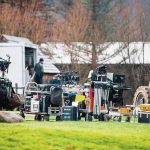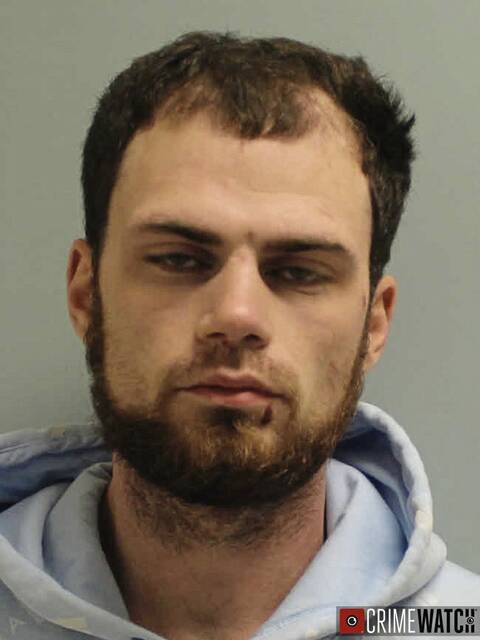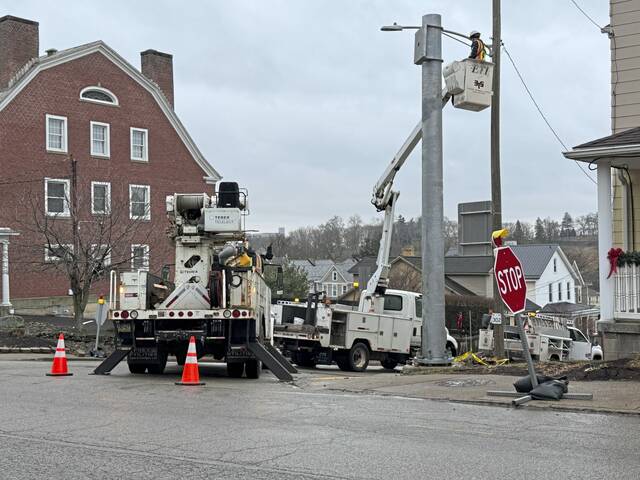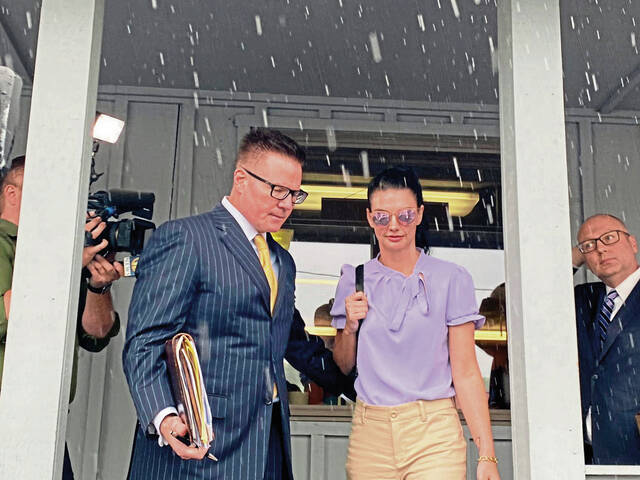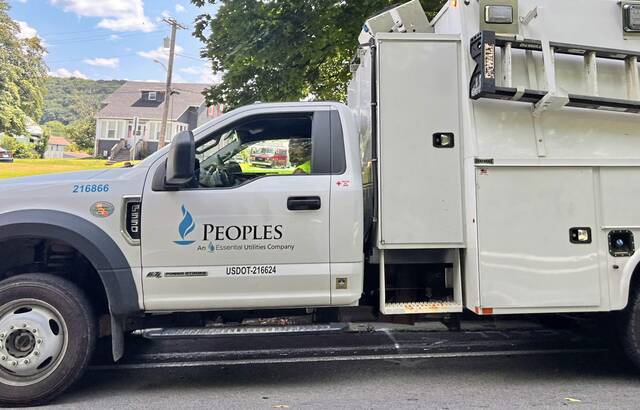A rich history, varied landscape and welcoming community have drawn director Scott Cooper back to Southwestern Pennsylvania to film his upcoming adaptation of “The Pale Blue Eye” for Netflix.
“It’s an incredibly pleasant place to shoot,” said Cooper, “and it works exceedingly well for the 1830s Hudson Valley.”
Cooper and lead actor Christian Bale came to the Pittsburgh area to film the 2013 drama “Out of the Furnace.” Now they’ve returned to translate for the screen Louis Bayard’s period mystery. The movie takes place in 1830 at West Point, N.Y., where a veteran detective (Bale) attempts to solve a string of murders with the assistance of a cadet who will become the famous author Edgar Allen Poe.
Cooper and his crew were in the Ligonier Township village of Laughlintown this week to shoot footage at the historic Compass Inn Museum. They are expected to continue work at other locations in the region into February.
Compass Inn is well-suited for Cooper’s purposes because it has been restored to its 1830s prime as a stopping place for drovers and stagecoach passengers. Filming there focused on the blacksmith shop, reconstructed on its original site.
“We were able to build onto what was the former blacksmith shop,” Cooper said. “Our production designer was able to seamlessly blend the portion we needed to shoot onto the existing structure.”
Bayard’s crew transformed the outbuilding into a representation of “Benny” Havens’ tavern, a popular watering hole that existed near West Point and is featured in Bayard’s novel.
“I wanted it to feel more rough-hewn and dark,” said Cooper, “a contrast to the very structured and rigid disciplines at West Point.”
Scenes of the military academy were shot at Westminster College.
The college “served beautifully as a more intimate version of West Point,” Cooper said. In 1830, he noted, “it was only 28 years old, still in its infancy.”
Among other locations, the crew headed to Moraine State Park for lake views that will mimic a portion of the Hudson River. Cooper also “shot in the McConnells Mill area, in the gorges along the creek.”
During the production crew’s time in Laughlintown, Cooper said, “We had a wonderful reception. Everyone was so warm and inviting and accommodating. That goes for Pittsburgh in general.”
Bayard reached out to the Tribune-Review to share that he was tickled to learn the Compass Inn location shoot was not far from the Laughlintown home of his grandparents, Louis and Isabel Bayard, who were members of the local Rolling Rock Club.
“I have warm memories of visiting them through the years in their charming house,” he said. “They’ve been gone since 1987.”
Cooper said the region offers interesting locations that haven’t been repeatedly used by other directors or become overly familiar to audiences.
In addition to its aesthetics, Cooper was attracted to Western Pennsylvania by a financial incentive for filmmakers.
“I love shooting here,” Cooper said. “I hope the state Legislature continues to offer a very generous tax rebate.”
A film production is eligible for the state’s tax credit program if Pennsylvania production expenses make up at least 60% of the film’s total production expenses. Eligible productions can receive a tax credit equal to at least 25% of qualified expenses and can use the credit to offset their state tax liability or sell it to another entity.




